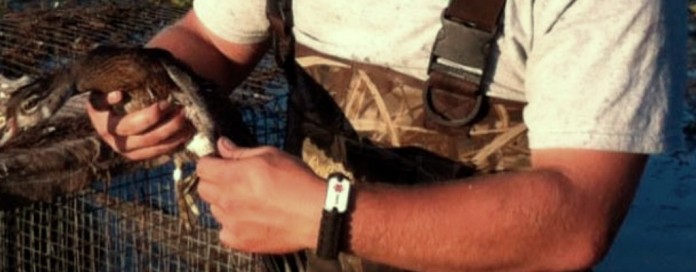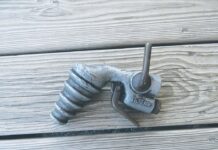
As fall approaches, some things are always a constant. For example, many people associate the leaves changing colors as a sign of fall. And many people notice birds beginning to migrate in the fall.
To many, no migrational phenomenon is better than that of waterfowl. But do you ever wonder where these birds end up after we last see them? Just how far can these things travel? Or, will they ever return back to the same spot?
Research trackers
Lots of research has been done over the years to determine the answers to all of these questions. Many state and federal agencies like the Ohio Division of Wildlife and the United States Geological Survey collaborate to see that little tracking devices get put into place on these creatures in the form of metal bands.
Once the ducklings or goslings are big enough, these creatures are humanely trapped and fitted with their very own piece of jewelry, (think of it as an ankle bracelet). Each band is carefully placed around the young bird’s leg with enough space for the bird to grow and mature, but so it won’t slip off the bird’s foot.
Each individual band has a different number on it. When the bird is fitted for a band, the bird’s age, sex, and location is noted and then placed in a database. The way that this information is transferred back to the USGS is typically by telephone.
When a hunter takes a bird that is fitted with a band, he is encouraged to call the phone number on the band to report a series of questions that can help researchers gather valuable data.
Another way data is gathered is by recapturing birds that have already been fitted with a band. Their information is recorded and entered into a database to keep a track on that particular bird’s migrational pattern. Some original bands can become worn and illegible. If a recaptured bird’s band is illegible, it is replaced with a new band.
Great details
Banding waterfowl has led to some pretty neat facts. Take, for example, that the oldest waterfowl ever taken by a hunter were a Canvasback and a goose, taken by two different people but both birds at the ripe old age of 29.
With banding, we also know that blue-winged teal migrate the farther south than any other North American waterfowl. A blue wing was banded near Oak Lake, Manitoba, and was shot by a hunter near Lima, Peru, more than 4,000 miles to the south.












